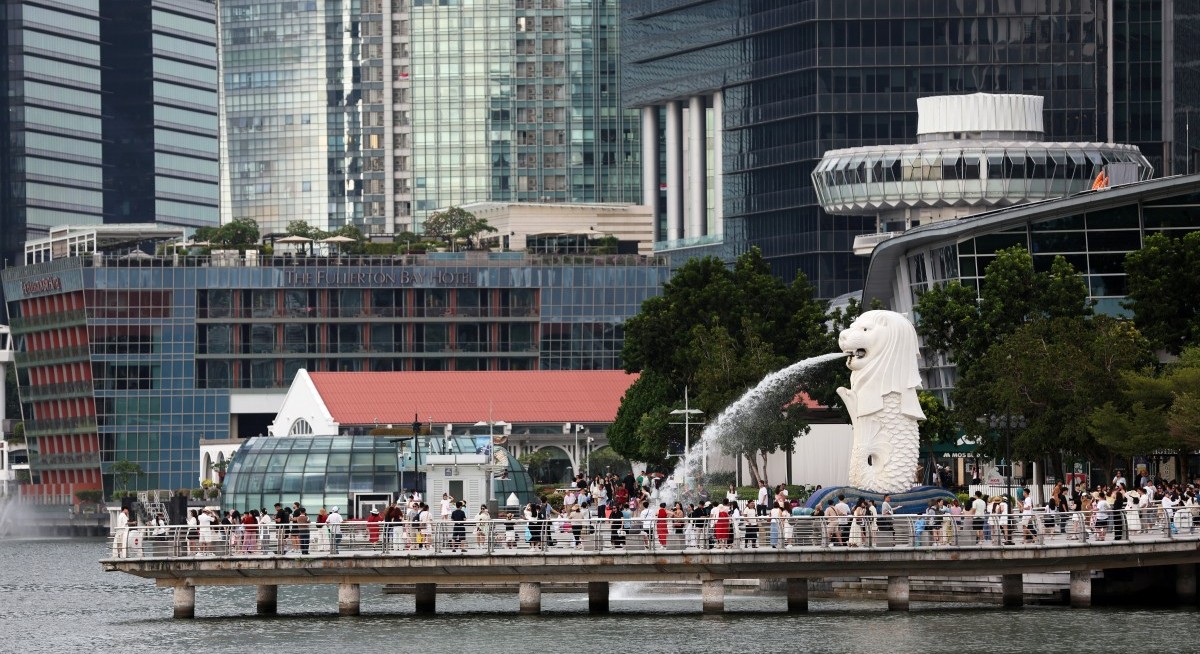In an Aug 6 note, Jaiswal says he is “staying optimistic” on the Singapore market “but with some caution”, owing to the “still-elevated risk of sector-specific tariffs”.
“Singapore’s market earnings outlook remains muted in the near term, with broad-based downgrades to 2025 and 2026 profit estimates over the past three months,” he adds. “We forecast earnings growth to recover in 2026, with market cap-weighted earnings per share (EPS) growth excluding REITs of 5.8% for our coverage universe. REITs under coverage should deliver a distribution per unit (DPU) growth of 4.2% in 2026.”
Jaiswal expects two US Federal Reserve rate cuts in 2025, “though the balance of risk leans towards just one”.
“Investors are gradually rotating from Singapore banks to REITs in anticipation of rate declines,” he adds. “Supported by a moderating yet positive GDP outlook, this shift reinforces a favourable backdrop for Singapore’s S-REITs, especially industrial REITs, which offer strong defensive qualities.”
See also: MAS picks Avanda, Fullerton, JP Morgan under $5 bil Equity Market Development Programme
According to Jaiswal, office REITs remain undervalued, with central business district (CBD) occupancy underpinned by limited new supply, while the retail and hospitality segments continue to lag.
Singapore banks, which make up half of the STI by weight, face softening fundamentals, but compelling dividend yields offer downside protection, says Jaiswal.
The way Jaiswal sees it, investors should focus on “high-quality, domestic-oriented [and] income-generating opportunities” in the consumer staples, healthcare, land transport and industrial REIT sectors.
See also: From America to Asia, ‘timing is right’ for SGX measures: Ng Kok Song
The Monetary Authority of Singapore’s (MAS) $5 billion Equity Market Development Programme (EQDP) should broaden institutional participation in high-quality small- and mid-cap stocks, says Jaiswal. “Declining interest rates and stable fiscal conditions boost support exposure to S-REITs and other high dividend-yielding equities.”
Jaiswal screened for high-quality small- and mid-cap names with a few criteria: exclusion from STI, market capitalisation between $300 million and $3 billion, free float of at least 20%, average daily trading volume (ADTV) of at least US$1 million over the past 20 trading days, and recent trading momentum — defined as the past 20-day ADTV exceeding the three-month ADTV.
Rotation into REITs
The outlook for the three Singapore banks remains clouded by global macroeconomic uncertainty, particularly from weakening trade and slowing economic activity, says Jaiswal.
DBS Group Holdings remains his top pick as a dividend play, with a target price of $47. “For banks, which have the largest sector contribution to STI earnings, we have seen upgrades for 2025 but downgrades for 2026 estimates.”
Jaiswal expects that S-REITs will recover in 2025 after three consecutive years of underperformance. “We continue to recommend a gradual increase in allocations to S-REITs, as policy uncertainties and external risks may result in periodic volatility and pullbacks.”
For more stories about where money flows, click here for Capital Section
In particular, industrial S-REITs continue to offer the strongest defensive characteristics, he adds.
“Singapore’s industrial sector remains supported by favourable demand-supply dynamics, with broadbased expansion in demand across segments. The logistics segment, both domestic and overseas (excluding China), remains a key outperformer, underpinned by stable rental growth and continued demand for high-specification facilities,” writes Jaiswal.
He expects industrial S-REIT occupancies to hold in the “high 80% range” in 2025, with industrial rents projected to rise by 1% to 3%.
“While the pace of rental growth is likely to moderate following sharp increases in recent years, segments such as multi-user factories and high-tech industrial spaces are expected to remain resilient. Business park occupancy remains a weak spot, but recent stabilisation and greater regulatory openness to repurposing space may offer some medium-term support,” he adds.
Among REITs, Jaiwal’s top sector picks are AIMS APAC REIT, with a $1.52 target price; CapitaLand Ascendas REIT, with a $3.20 target price; CapitaLand Integrated Commercial Trust, with a $2.44 target price; Frasers Centrepoint Trust, with a $2.50 target price; and Keppel REIT, with a $1.05 target price.
GDP growth to slow but remain positive
Singapore’s economic outlook remains clouded by persistent global uncertainties, despite some positive near-term data surprises, says Jaiswal. He keeps his 2025 GDP growth forecast at 2.0% y-o-y, “though risks remain skewed towards the downside”.
This is at the top of the Ministry of Trade and Industry’s (MTI) GDP growth forecast for 2025 at 0% to 2%.
In contrast to the broader headwinds, Jaiswal has revised his 2025 forecast for non-oil domestic exports (NODX) upwards to 2.0%, from an initial projection of 0.0%. “This revision is supported by a strong year-to-date performance, with NODX growing at an average of 5.2% y-o-y in 1H2025, the fastest pace since July 2024.”
Meanwhile, in light of the easing inflationary pressures observed to date, Jaiswal has revised RHB’s inflation forecasts for Singapore. For 2025, he now projects headline inflation of 1.2%, down from 1.6% previously; and core inflation of 0.9, previously 1.1%.
These revised estimates are consistent with MAS’s official projections, he adds, which place both the headline and core Consumer Price Index (CPI) between 0.5% and 1.5%.
Read about other analysts' picks:
- DBS picks seven ‘stocks to watch’ that could gain from Avanda’s coming fund strategy
- Maybank Securities picks 18 non-STI stocks that stand to win from MAS’s market reforms
- CGSI removes SIA Engineering, BRC, Frencken, Pan-United and PropNex from ‘high-conviction list’
- These are the 10 stocks that could be the ‘biggest winners’ of MAS’s $1.1 bil distribution, says UOBKH
Read about The Edge Singapore's five stocks to watch:
- Can Old Chang Kee be a yummy staple among investors?
- GuocoLand’s Grade A buildings a bulwark for revenue, earnings and valuation
- Centurion breaks above $1 bil market cap milestone, with more to come
- Banyan Group’s asset-light strategy paves growth runway as earnings and pipeline expand
- MoneyMax reaches all-time high as gold rally and loan growth spark investor interest




